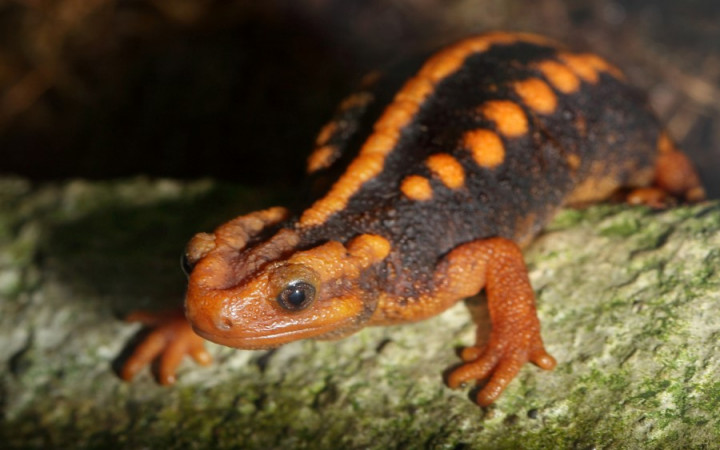Today’s Wonder of the Day was inspired by Garid. Garid Wonders, “What is a Newt?” Thanks for WONDERing with us, Garid!
What’s that? Over there! Down by the edge of the creek, you just saw something dart around the edge of a tree. Was it a frog? A chameleon? Some type of lizard? Maybe it was a newt!
Newts are semi-aquatic amphibians. They look a bit like a combination of a frog and a lizard. Like frogs, they have smooth, moist skin. As adults, they have long tails like lizards.
Sometimes people refer to newts as salamanders. And they’re right—all newts are members of the scientific order Salamandridae. However, not all salamanders are newts. Newts are part of the subfamily known as Pleurodelinae.
Where do newts live? You can find them in the waterways of North America, Europe, and Asia. Newts develop in three distinct stages. They begin life as aquatic larvae. As they grow, they stay mainly on land and are called efts. When they reach adulthood, they have fully-developed lizard-like bodies.
Some varieties of adult newts spend all their time in the water. Other types are semi-aquatic. They live most of the time on land and only return to the water annually to breed.
Newts have some special features that make them unique. For example, newts can regenerate missing body parts. They can regrow their arms and legs, eyes, intestines, jaws, heart, and spinal cord!
Many varieties of newts can also secrete toxins through their skin. This defense mechanism helps to protect them from predators, such as fish, foxes, snakes, and birds. The rough-skinned newt that lives in the Pacific Northwest can make enough tetrodotoxin to kill an adult human. Fortunately, a newt’s toxins are only lethal when swallowed or absorbed through mucous membranes or breaks in the skin.
In addition to preying on insects, newts have another important job. They can help scientists study the health of the environment. Their sensitive skin helps them do so. If scientists see newts living in a body of water, that’s a good indicator of the area’s health. Since they take in oxygen and other needed nutrients through their skin, poor water quality can force newts to seek new habitats.
Have you ever seen a newt? Do they remind you of any other animals? These interesting creatures are very useful to both their habitats and science! If you spot a newt in your area, leave it where it is. You can still enjoy observing it from a distance!
Standards: NGSS.LS1.A, NGSS.LS4.C, NGSS.LS4.D, CCRA.R.4, CCRA.L.3, CCRA.L.6, CCRA.L.1, CCRA.L.2, CCRA.W.2, CCRA.W.9, CCRA.R.1 CCRA.R.2, CCRA.R.10CCRA.SL.1




